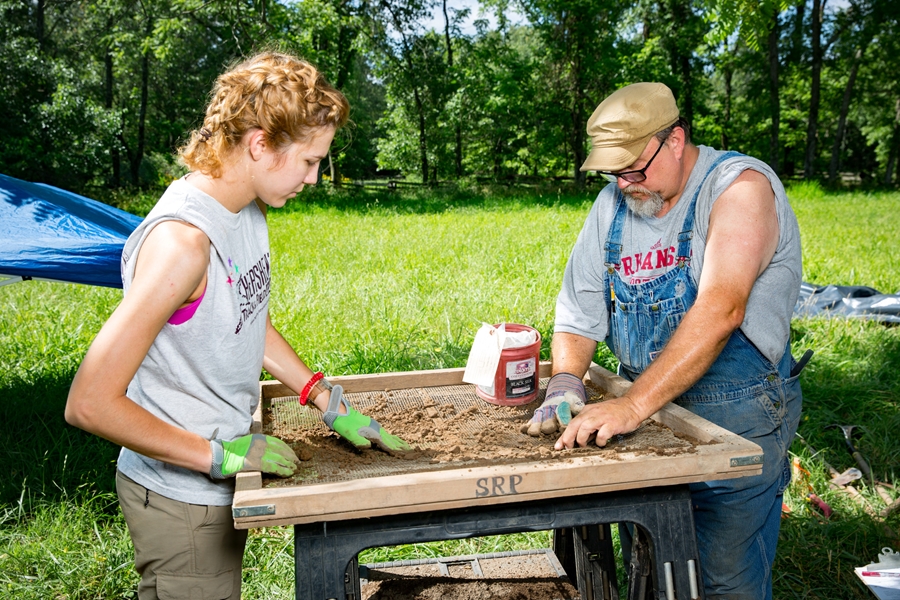
The 2017 University of Arkansas Archeological Field School focuses on Leetown, a Civil War-era hamlet that served a critical role during the two-day Battle of Pea Ridge in 1862. The hamlet included two stores, a church, a Masonic hall and several homes, which were used as field hospitals during the battle. The Pea Ridge National Military Park, in collaboration with the Arkansas Archeological Survey, has embarked upon a four-year project to unearth Leetown to offer better interpretation for park visitors. The month-long school is part of this larger project, as well as an opportunity for students to gain field experience.
The already slow, tedious work of "documenting floors and walls" would be easier if there wasn't so much packed gravel. In a week's time, two new "units" have started 30 feet or so west of a series of holes that continue to provide rich information about the people who inhabited this place 80, 100, even 150 years ago.
With only a week left to dig, Jamie Brandon and his colleagues — professional and student — are trying to identify the main elements of the original log cabin inhabited by John W. Lee, the farmer who settled this area in 1840. "Original," in this context, has two meanings: The log cabin was the first structure built at Leetown and, secondly, was added on to, probably multiple times, eventually swallowed up by a larger, more modern structure.
The researchers' efforts here are complicated by a top layer of dense, hard-packed gravel, which Brandon, an associate research professor of anthropology, thinks might be the residue of fill that was bulldozed onto the site after the modern structure — and probably the original cabin within it — was taken down in the 1960s.
For anthropology student Breezie Faulkner and Lydia Rees, a research assistant at the Archeological Survey, working here feels like digging in a parking lot. This is pure, unglamorous manual labor, shoveling and picking, scraping and sweating.
But, the new area has yielded a few promising pieces of "material culture," including a hairpin from the "turn of the century" (everyone around here understands this expression to mean 1900 instead of 2000) and several small pieces of brightly colored decorative porcelain. When students present these artifacts to Brandon, he immediately tags their vintage. To the layperson, these "temporal diagnostics" can seem overwhelming, but it's not that difficult when you've been doing it for almost 30 years.
"It's sort of like cars," Brandon says. "Everyone knows what a car from the '50s looks like, with their tailfins and all that chrome, compared to cars of the '70s or '80s. Identifying artifacts is just like that."
Sometimes, Brandon's methods are unconventional.
"Can you tell what this is?" asks Michaela Conway, a junior majoring in anthropology. Stepping out of the hole next to the one dug by Rees and Faulkner, Conway hands Brandon what looks like piece of a plastic tent stake. It's black and has clumps of dirt all over it. Brandon studies the artifact for a second and then puts it in his mouth and bites down on it like a bit. The students, though not surprised, snicker.
"Yeah, I put everything in my mouth," says Brandon. "You can get a lot of information that way. That's how I learned that bone sticks to the tongue."
Brandon said the piece appeared to be part of a gasket, perhaps from the sought-after cistern (or well) next to the house.
For more information about Leetown and the Arkansas Archeological Field School, visit the Field Notes section of Research Frontiers, the home of research news at the University of Arkansas.
Topics
Contacts
Matt McGowan, science and research communications officer
University Relations
479-575-4246,
dmcgowa@uark.edu